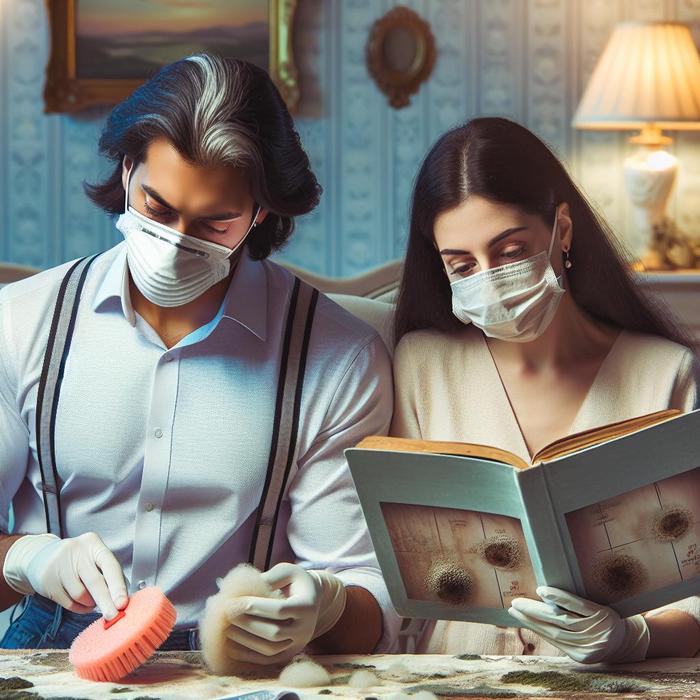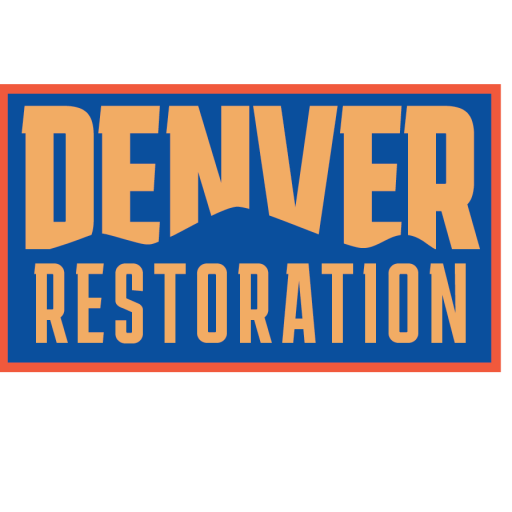Understanding the Risk: Mold and its Impact
Mold infestation is a silent predator, often going unnoticed until it has caused substantial harm to your property. However, the extent of the damage it causes goes beyond just physical degradation. Mold can have severe health repercussions, with symptoms ranging from allergic reactions and asthma to respiratory complications. As such, it is crucial for every homeowner, property manager, and business owner to understand the importance and strategic execution of mold remediation techniques.
Grasping Effective Mold Remediation Techniques
Mold remediation involves the identification and addressing of mold occurrence in an indoor environment. This process is pivotal in ensuring a safe and healthy living or working space. Understanding the basics of mold remediation can empower you to take proactive and informed steps towards a risk-free environment.
Inspection and Assessment
The first step in effective mold remediation is to thoroughly inspect and assess your property. This involves identifying any visible signs of mold, as well as testing for hidden mold in hard-to-reach or out-of-sight areas. Employing advanced technology and tools for this step ensures an accurate and comprehensive understanding of the mold situation on your property.
Containment and Air Filtration
Post identification, the next step is containment. This involves isolating the affected areas to prevent the mold from spreading during the removal process. Alongside containment, professionals utilize advanced air filtration devices to capture microscopic mold spores in the air to negate any health risks.
Removing Contaminated Materials
Materials affected by mold need to be carefully and safely removed and disposed of, as per EPA guidelines. This helps ensure that mold spores are not released into the air during the cleanup process.
Cleaning, Sanitizing, and Restoration
The next step in the process is the thorough cleaning and sanitizing of the remaining materials, furniture, and personal belongings. Post clean-up, it’s time to restore the property to its pre-mold condition through minor repairs or major reconstructions if needed.
Diving into DIY Mold Removal
While the severity of mold damage might necessitate professional intervention, it’s empowering to know that minor mold issues can often be addressed with DIY mold removal strategies. Here are some mold cleanup tips that can come in handy:
Vinegar Solution
Vinegar is a mild acid that can kill 82% of mold species. To utilize this, spray vinegar on the moldy surface and leave it for an hour. Following this, clean the area with water and allow it to dry completely.
Baking Soda
Baking Soda, a safe and mild substance, can be used alongside vinegar and water to combat mold. It not only removes the mold but also absorbs moisture, which could otherwise cause mold regrowth.
Tea Tree Oil
Despite being a bit more expensive than other solutions, tea tree oil is incredibly effective at removing mold. It is particularly useful for non-porous surfaces like tiles and glass.
Preventing Mold Resurgence
While remediation and DIY removal strategies are critical, preventing the recurrence of mold is equally important. Aim for regular cleaning schedules, proper ventilation, controlled humidity, and immediate addressal of leaks and damp spots. Educating yourself on mold prevention strategies can help ensure a safe and healthy environment in the long run.
In conclusion, mold infestation is a serious issue that deserves careful attention and proactive measures. Empower yourself with effective mold remediation techniques, engage with DIY mold removal strategies when possible and strive for consistent prevention to create and maintain a mold-free environment.
Understanding the Risk: Mold and its Impact
Mold infestation is often a silent predator, commonly going unnoticed until it has inflicted substantial harm to your property. However, the extent of the damage it causes extends far beyond mere physical degradation. Mold can have severe health repercussions, with symptoms ranging from allergic reactions and asthma to severe respiratory complications. As such, it is critical for homeowners, property managers, and business owners alike to fully understand the importance and strategic execution of mold remediation techniques.
Gauging the Efficacy of Mold Remediation Techniques
Mold remediation involves the identification and addressing of mold occurrences in an indoor environment. This process is pivotal in ensuring a safe and healthy living or working space. Acquainting oneself with the basics of mold remediation can empower you to take proactive, informed steps toward a risk-free environment.
Thorough Inspection and Assessment
A crucial step in effective mold remediation is to carry out an extensive inspection and assessment of your property. This action involves identifying any visible signs of mold, as well as testing for hidden mold in areas that are either hard to reach or simply out of sight. Making use of advanced technology and tools during the inspection ensures a precise and comprehensive understanding of the mold infestation on your property.
Containment and Filtration of Air
After identification, the subsequent step is containment. This strategy involves the isolation of the affected areas to prevent the mold from spreading during the removal process. Along with containment, professionals utilize advanced air filtration devices to capture microscopic mold spores in the air, thus mitigating any potential health risks.
Safe Removal of Contaminated Materials
Materials that have been affected by mold need to be carefully and safely removed and disposed of in accordance with EPA guidelines. This step helps ensure that mold spores are not released into the air during the cleanup process.
Cleaning, Sanitization, and Restoration
After the removal of contaminated materials, the remaining materials, furniture, and personal belongings must be thoroughly cleaned and sanitized. Once the cleanup is complete, it’s time to restore the property to its pre-mold condition through minor repairs or, if necessary, major reconstructions.
Exploring DIY Mold Removal
While the severity of mold damage might necessitate professional intervention, it’s comforting to know that minor mold issues can typically be addressed with DIY mold removal strategies. Several mold cleaning tips can be utilized:
Vinegar Solution
Vinegar, a mild acid, can kill up to 82% of mold species. To use this method, simply spray vinegar on the moldy surface and leave it for an hour. Afterward, clean the area with water and allow it to dry completely.
Baking Soda
Baking Soda, a safe and mild substance, can be used in combination with vinegar and water to combat mold. It not only removes the mold but also absorbs moisture, which could otherwise trigger mold regrowth.
Tea Tree Oil
Although slightly more expensive than other solutions, tea tree oil is incredibly effective at removing mold. It is particularly useful for non-porous surfaces like tiles and glass.
Prevention of Mold Resurgence
While remediation and DIY removal strategies are vital, preventing the recurrence of mold is equally important. Aim for regular cleaning schedules, proper ventilation, controlled humidity, and immediate addressal of leaks and damp spots. By familiarizing yourself with mold prevention strategies, you can help ensure a safe and healthy environment in the long run.
Mold infestation is a serious issue that warrants careful attention and proactive measures. By equipping yourself with effective mold remediation techniques and engaging in DIY mold removal strategies, you can work towards a consistent prevention strategy that helps maintain a mold-free environment.
Water Damage: An Underestimated Foe
In addition to mold infestation, water damage is another potential risk that can lead to significant property loss if not attended to promptly and adequately. The consequences can range from structural weakening to mold growth, making it vital for homeowners, property managers, and business owners to be aware of water damage restoration processes.
Key Steps in Water Damage Restoration
Water damage restoration involves a set of procedures designed to restore property back to its original, pre-loss condition after water or flood damage. Understanding the essential steps of water damage restoration can provide a clear course of action in the face of potential water damage.
Initial Inspection and Damage Evaluation
The preliminary step in the restoration process entails conducting an in-depth inspection of the property to assess the severity of the water damage. By understanding the extent of the damage, experts can devise a suitable plan of action.
Water Removal and Drying
After evaluating the damage, all standing water must be promptly removed using vacuums and powerful pumps. This is followed by a drying process to extract remaining moisture, thereby preventing additional damage and mold growth.
Cleaning and Sanitization
After drying, the property must be thoroughly cleaned and sanitized to remove any contaminants brought by the water. Specialized cleaning treatments are used to clean affected areas and belongings.
Restoration and Repairs
The final step of the process includes restoration and repairs to bring the property back to its pre-loss condition. This could involve minor repairs, such as replacing broken windows, or it could require significant work like rebuilding entire rooms.
DIY Steps for Minor Water Damage
For minor water damage, certain DIY steps can be helpful. However, for extensive water damage, it’s ideal to engage with professional water damage services.
Stop the Water Source
If possible, identify and stop the source of water. This could be as simple as turning off the water supply if a pipe has burst.
Remove Excess Water
Try to remove as much excess water as possible by using towels, mop, or a wet/dry vacuum.
Dry Out the Area
Open windows and use fans to facilitate drying. Dehumidifiers can also be beneficial in removing moisture from the air.
Disinfect and Clean
Once dried, clean and disinfect the area to prevent mold and bacteria growth.
Preventing Water Damage
Preventing water damage is just as crucial as knowing how to handle it. Regular property inspections, maintaining a clean and functional gutter system, and implementing a proper landscaping drainage plan are just a few ways to avoid water damage.
To sum up, water damage, like mold, is a significant threat to property and health. By implementing prompt and effective water damage restoration techniques and engaging in regular preventive measures, you can prevent long-term damage and create a safe, healthy environment.

